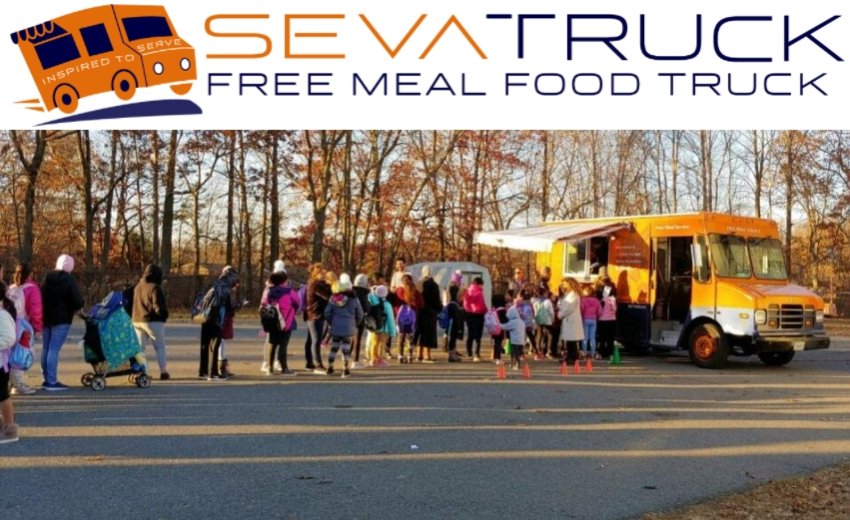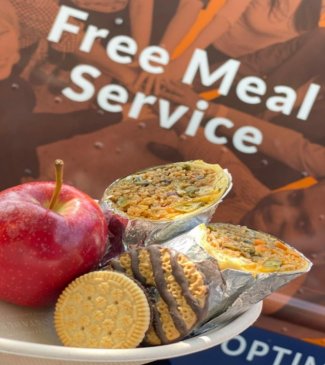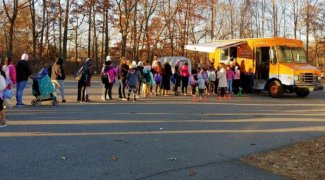When Sri Guru Nanak Dev Ji fed the Sadhus near his home at Sacha Sauda, he set in motion the institution of Langgar, one of the most visible activities in Gurdwaras today. Most large historical Gurdwaras in India continue this tradition and almost all Gurdwaras in North America now have this as part of their Sunday service. Although COVID has disrupted services in some places, langgars are now restarting as we recover from the pandemic.
But increasingly, Langgar has begun to lose its original purpose. Originally it was a seva, it was supposed to feed the hungry and needy and it was to promote equality and the oneness of all. Langgar in many Gurdwaras today feeds the well-fed, is sometimes catered by an outside group and we see different foods being served to different groups.
The needy are often those outside the Gurdwara location and they may like a different type of food than the ones we prefer. They may speak a different language and look different, and the places where they reside may not be in proximity to the Gurdwara compound. Unlike in India where Gurdwara’s are located in highly populated areas and are well known for offering a warm meal to anyone who is hungry, in North America they are located in well suburban and rural areas where the concept of Langgar is unknown to those who need it most. So how do we ensure that the true concept of Langgar, serving those who need it most, remains an authentic pillar of the Sikh faith?
Enter the Sevatruck. Started initially in the Washington DC area by the SevaTruck Foundation, it involves a food truck that is run by some Sangat members and takes food to deserving neighborhoods and schools. The ability to have a fully operational kitchen on the truck allows them to prepare and serve hot meals while the mobile ability of the SevaTruck takes them to where the need is greatest. This has now spread to other cities (Bay Area CA, Detroit MI, and Richmond, VA ). Although each of the locations are operated independently, they share the same name and help each other with operations, menus, administration and fundraising. None of them are run by a Gurdwara, (but may have an association with one), and all have Sikhs and non-Sikhs working together to serve local communities. They have collectively served over 200,000 meals since launching in Washington DC in 2016.
SEVATRUCK DC (the original food truck)
This was the concept of Sonny and Seema Kakar. They wanted to bring the Langgar “to the people” rather than have them queuing up at the Gurdwara for leftover food. They bought a FedEx truck and customized it into a fully licensed food truck and then hired part-time staff to help with daily food service. They identified places where the need was greatest – Title 1 schools where the abundance of children are on free or reduced meals, Veterans Centers, homeless shelters, local churches and other community centers that focused on vulnerable communities. They also formed a link with a local pastors who collected produce from local farms to distribute to needy families. While the locals were waiting for the produce, SevaTruck served them a free meal!
When COVID hit last year, there was a significant disruption of services. Not only was there an increased need for meals, but shopping was restricted and getting volunteers was also a problem before the vaccines were produced. SevaTruck then morphed into a “food base” preparing about 300-400 meals per day. These were then either delivered or picked up by various associations - churches, mosques, schools, or community centers - who already had feeding programs and were able to distribute the meals safely. School service will resume again as schools reopen after the pandemic has waned.
Expansion plans in the Washington DC area continue for SevaTruck so that they can reach more people. In a recent collaboration, Fairfax County has provided SevaTruck the use of a brand new industrial kitchen to ramp up the number of meals prepared for local neighborhoods. The ability to have a large kitchen with ample storage and state-of-the-art appliances will further expand menu options, allow for additional volunteers, and increase the output of meals served.
Website : www.sevatruck.org
SevaTruck Michigan
The Michigan chapter was started by Mandeep Singh in 2017. He initially partnered with Aasra, a local charity, and has now become its own entity, SevaTruck Michigan. They help food insecure households in the Metro Detroit Area. Mandeep has been helped by family members and also by Glenn Wygocki, a local businessman.
In the Metro Detroit Area, 500,000 people including nearly 200,000 children, live in poverty. Michigan has lost one million jobs over the past decade. A large share of the jobs that were lost are from Southeast Michigan. By working with a Homeless Shelter in Detroit (NSO Tumaini Center), a local school district (Avondale Schools), and the Hope Warming Center they provide meals to students and their families and a local youth group. They have served nutritious meals for free in over 35 locations across Michigan, including Detroit since 2017. The Sikh Gurdwara in Rochester Hills provides SevaTruck the use of their kitchen as a commissary to prep and cook and prepare all meals.
After COVID hit, SevaTruck Michigan has participated in multiple community effort to help the needy. Two other families from Troy, Michigan have also joined in regularly volunteering with food preparations and distribution. The end result are thousands of hot meals served in drive-through fashion every Thursday (last week, they served nearly 300).
Website: (https://sevatruck.org/sevatruck-michigan/.)
SevaTruck in San Francisco, California
This California SevaTruck started in mid-2020. As they saw the impacts COVID had on restaurant and cafeteria closures, they realized that there would be a disproportionate impact on lower income families. They quickly assembled a team and bought a ready-to-go foodtruck, that only needed to be wrapped with the SevaTruck graphics and message. The mobilized a team to work with the SevaTruck Washington DC to learn about the operations, food sourcing, recipies, etc and visited the DC area for several days to engage directly in learning the day-to-day operations. With a core group of about 10 volunteers, they became fully operational in mid-2021 and have hired a full-time driver and helper to sustain daily operations. They serve 100-150 hot, fresh, vegetarian meals per day for 4 days every week. One day is set aside for procuring supplies and they have recently added Saturday to their schedule. They are also associated with the Freemont Gurdwara and use their kitchen for food preparation. Since some Hospital Cafeterias have closed, one of their weekly stops is at a hospital to provide free food to front-line workers. They also serve food at a homeless shelter and at an emergency shelter for disadvantaged families.
Website: 5sikhseva.org
SevaTruck , Richmond VA (SevaTruck RVA)
SevaTruck RVA is the latest SevaTruck to start operations – they began serving meals in July 2021. It was the brainchild of two friends, Justin Moyer and Dr. Harpreet Grewal, both of Richmond, VA. They are serving about 50 meals a day to an elementary school, to the homeless and other needy groups, all in the Richmond metropolitan area. Instead of a full food truck, they have a trailer which they use to transport and serve the food. The group has access to a commissary for food preparation and are using local produce for salads and burritos. Some of the produce is grown in Justin’s farm. Molly McMahon runs the operation and is helped by volunteers for food prep and serving.
Website: www.SevatruckRVA.org
Submitted by Gurpal Singh Bhuller



